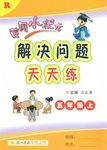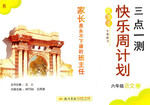题目内容
by the window lost in thought for a long time, I realized that no scene in the world remains .
A.Stand; unchanged B.To stand; unchanging
C.Standing; unchanged D.Stood; unchanging
C

 黄冈小状元解决问题天天练系列答案
黄冈小状元解决问题天天练系列答案 三点一测快乐周计划系列答案
三点一测快乐周计划系列答案Dr. Marie Curie is known to the world as the scientist who discovered radioactive metals i.e. Radium and Polonium.
Marie Curie was a Polish physicist and chemist. Together with her husband, Pierre, she discovered two new elements and studied the x-rays they emitted. She found that the harmful properties of x-rays were able to kill tumors. By the end of World War I, Marie Curie was probably the most famous woman in the world. She had made a conscious decision, however, not to patent methods of processing radium or its medical applications.
Marie Curie was born on November 7, 1867 in Poland and died on July 4, 1934. Her co-discovery with her husband Pierre Curie of the radioactive elements radium and polonium represents one of the best known stories in modern science for which they were recognized in 1901 with the Nobel Prize for Physics. In 1911, Marie Curie was honored with a second Nobel prize, this time for chemistry, to honor her for successfully isolating pure radium and determining radium's atomic weight.
As a child, Marie Curie amazed people with her great memory. She learned to read when she was only four years old. Her father was a professor of science and the instruments that he kept in a glass case fascinated Marie. She dreamed of becoming a scientist, but that would not be easy. Her family became very poor, and at the age of 18, Marie became a governess. She helped pay for her sister to study in Paris. Later, her sister helped Marie with her education. In 1891, Marie attended the Sorbonne University in Paris where she met and married Pierre Curie, a well-known physicist.
Marie Curie contributed greatly to our understanding of radioactivity and the effects of x-rays. She received two Nobel prizes for her brilliant work, but died of leukemia, caused by her repeated exposure to radioactive material.
1.The underlined word “emitted” in the 2nd paragraph means_______.
|
A.gave off |
B.gave away |
C.set out |
D.set off |
2.According to the passage, which order of the following is right?
① Marie Curie worked as a governess. ② Marie Curie met and marry Pierre Curie.
③ Marie Curie learned to read. ④ Marie Curie was honored with a second Nobel Prize.
⑤ Marie Curie discovered radium.
|
A.①②③④⑤ |
B.③①②⑤④ |
C.①②③⑤④ |
D.③①②④⑤ |
3. When did Marie Curie win a Nobel Prize for a chemistry?
|
A.In her twenties |
B.In her thirties |
C.In her forties |
D.In her fifties |
4.What does the passage mainly talked about?
|
A.Marie Curie discovered radium |
B.Marie Curie, a famous chemist |
|
C.Marie Curie won two Noble Prizes |
D.The brief biography of Marie Curie |
When Charles Strattion was five, he stopped growing. His mother took him to see the famous showman, P.T.Barnum, and thought a small person would be the perfect addition to his show. He hired Charles’ parents along with him, and they traveled around the world together.
He gave the two-foot-tall Charles a new name, general Tom Thumb. He taught Tom how to sing, dance, act, and tell jokes. When he felt Tom was ready to perform on stage, he made up ads. To stir up great interest, he said that Tom was eleven years old and had come from England.
During the show, Tom fought battles pretendedly with tall people. He also danced upon a wooden plate held by a person who was eight feet tall.
Tom’s act was very popular and brought in a lot of money. By the time Tom was an adult, he had grown very rich. He had become a billionaire at the age of twenty-five.
Fortunately for Tom, Mr. Barnum added more little people to his show, and Tom became lucky in love as well. One of the little people was Lavinia Warren, a school teacher. Tom was able to win her love, and they married.
The ceremony and reception were the talk of the town. They were attended by many rich and famous people and by about two thousand guests. Crowds filled the streets of New York to have a look at their tiny wedding carriage. The couple even met with President Abraham Lincoln on their honeymoon, just before going to live in Tom’s house in Connecticut.
Their wedding, which took place during the Civil War, provided a welcome escape from the sad problems of war. Not willing to let this bit of sunshine fade, communities throughout the country sponsored “Tom Thumb” weddings. In these weddings, small boys and girls, all dressed up, went through marriage ceremony for fun.
1.“the talk of the town” means _________ .
|
A.they were in the newspaper |
|
B.people spread mean rumors about them |
|
C.they were the most popular things happening |
|
D.they were discussed in a city meeting |
2.What does the author think about Tom Thumb’s wedding?
|
A.People gave it too much of their attention. |
|
B.It helped people cheer up in a dark time. |
|
C.It was funny and ridiculous. |
|
D.Tom and Lavinia were stupid. |
3. Which of the following is the best clue to the fact that Tom was smart?
|
A.He became a billionaire at twenty-five. |
|
B.He learned how to sing, dance, and act at a very young age. |
|
C.He met with President Lincoln during his honeymoon. |
|
D.He married a school teacher. |
4. It was very funny when Tom danced on a wooden plate held by a person who was eight feet tall because ________ .
|
A.the wooden plate would make it sound as if Tom were tap dancing |
|
B.it made Tom feel taller |
|
C.the eight-foot-tall man was the only tall person Tom trusted |
|
D.the difference between them would make Tom look even smaller |
5. What does the author imply in the last paragraph?
|
A.Weddings always make people feel full of sunshine. |
|
B.People are always disappointed during wartime. |
|
C.Entertainment can serve an important purpose. |
|
D.People should be married even if they are small. |